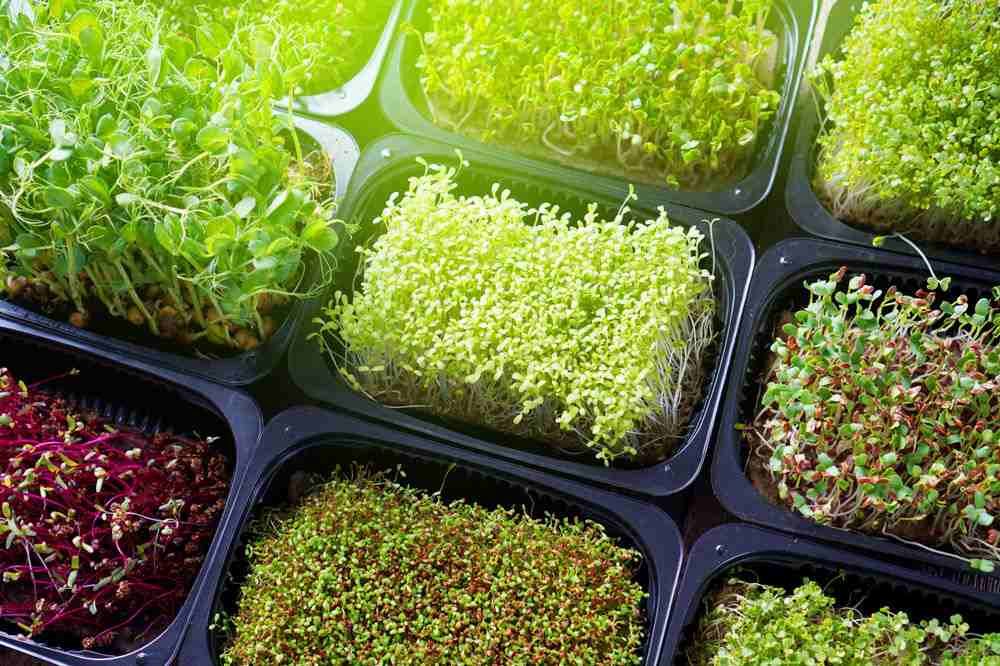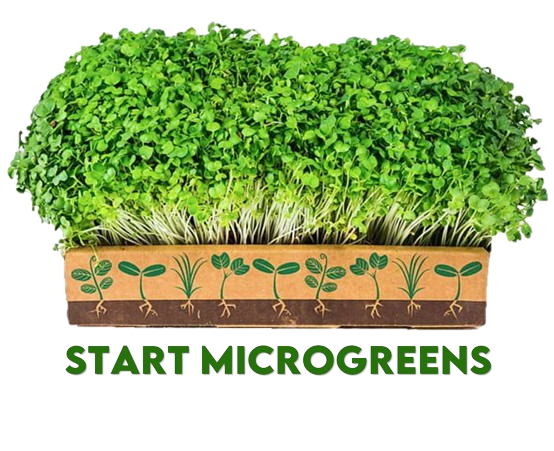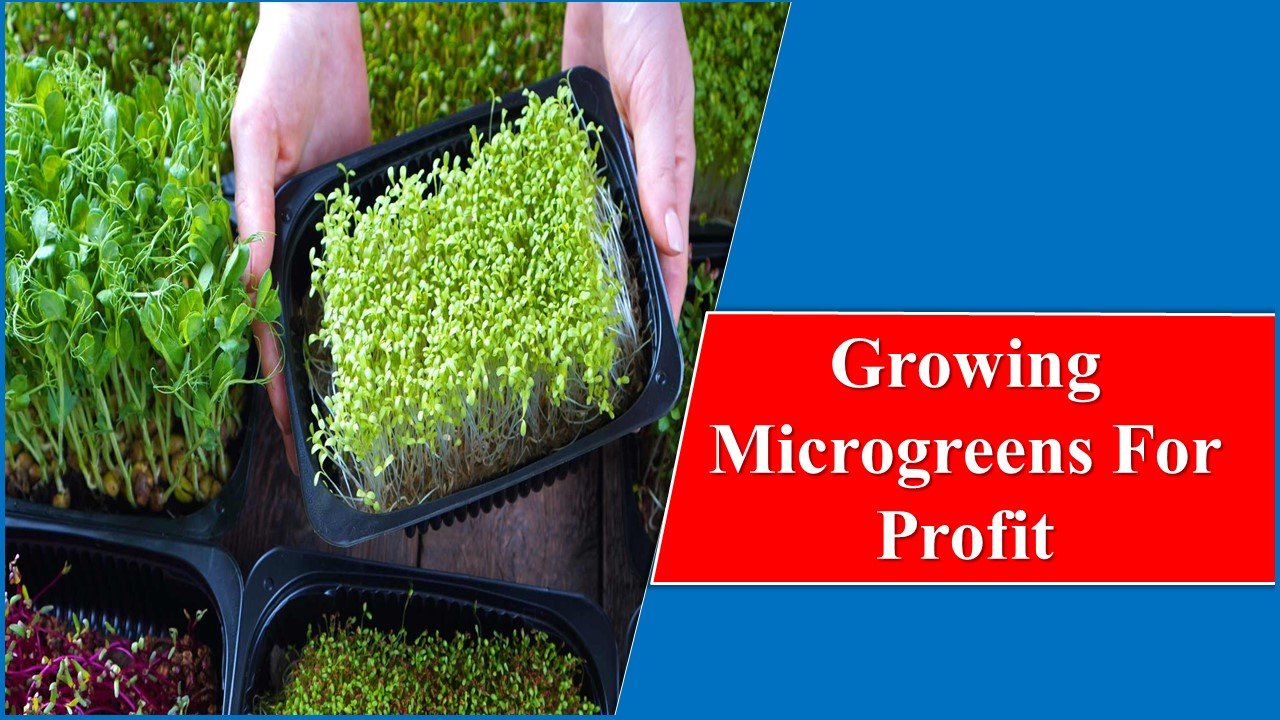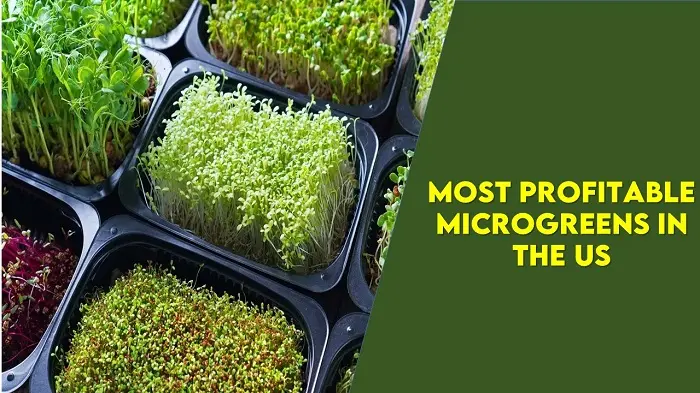Growing Microgreens For Profit – The Profit Potential
Are you guys interested in establishing a microgreens setup for commercial purposes? If yes, this article is perfect for you. Today’s agriculture entrepreneurship is something that can help you achieve greater heights, unlike other businesses. To begin any enterprise of your choice, one needs a good investment hoping for returns in the long run. If investment is an obstacle to you then no worries because I am here to guide you through this challenge by letting you know how microgreens can help you achieve good profits with minimum investment.
Harvested at an early stage of growth, these microgreens pack a lot of flavor, color, and nutrients into a small package. How to start growing microgreens for profit? With the growing demand for locally grown, fresh fruit, microgreens offer a viable business opportunity for anyone looking to make a tidy profit. This article deals with growing microgreens for profit. Let’s begin this without delay.
What Exactly Are Microgreens?
Microgreens are miniature greens that are edible at early growth stages. These days, microgreens are on trend and gained popularity. Microgreens are essentially the seedlings of vegetables and herbs that are harvested just after the emergence of their first true leaves. Unlike sprouts, which are harvested at an even earlier stage, microgreens are allowed to grow for a slightly longer period, typically between 7 to 21 days after germination.
Did you ever think that these little greens have found so many ways to be added to our daily routine right in the home without any dependency on external sources.? You might have probably seen this in very fancy and exotic cafes and restaurants where some tiny and crunchy greens stuck in between the last wrap you had. All these can also be done and made by you. Like, why not?

Why Opt For Growing Microgreens For Profit
High Demand
As customers look for fresh, locally sourced, and nutrient-rich produce, the demand for microgreens is continuing to soar. Restaurants, specialty grocery stores, farmers’ markets, and health-conscious people are prepared to spend more for these delicate greens. We just need to set the target customers and target location where these microgreens selling would be running at a good pace.
If this is found, you are halfway done. One can also approach villas and communities where people are pretty much interested in such stuff and who says know if you are offering fresh and homegrown food? You can also push microgreens by educating the people about setting up the microgreens unit in their homes which will allow them to begin cultivation and reap the benefits of it.
Quick Turnaround
Microgreens develop quickly which means they can be harvested in one to three weeks or sometimes even less as opposed to regular crops that can take months to mature. This maximizes your earning potential by enabling many harvests in a short amount of time. One can go for multiple cycles in a month to meet production and this feature ensures to have year-round availability.
Minimal Space Needs
Because microgreens may be cultivated in small areas, they are perfect for urban farmers, amateurs, and business owners who have limited space. They can be grown inside on trays, shelves, or even vertically, which maximizes available area. You can immediately start this cultivation process even indoors preferably in your room or balconies. This simplicity of growing them will allow every individual to start their cultivation.
Low Startup Costs
Does growing microgreens for profit require big investment? The initial expenditure needed to launch a microgreens business is quite small when compared to large-scale farming enterprises. A fast start-up is possible since basic supplies like trays, soil, seeds, and light sources can be purchased at reasonable prices. Even when one goes for cultivation on a commercial scale, it doesn’t cost much because initial inputs such as trays lights, and other extra materials come under fixed costs and one need not purchase them again. The only input that has to be purchased multiple times is the seed.
How To Begin microgreen?
Research and Planning
For any enterprise to start, research and simultaneous planning are the first and foremost things needed. Proper research on the material availability and the unit setup has to be taken care of. Begin by researching market demand and identifying potential customers in your area. Tailor your selection of microgreens to meet the preferences of your target market. Thorough research on where you can sell the product is also needed initially to set the target base for your sales.
Supplies and Equipment
Growing microgreens for profit is easy as not much equipment is needed. Purchase high-quality seeds from reputable suppliers, ensuring they are untreated and suitable for microgreen production. Acquire trays or containers with good drainage, a sterile growing medium (such as soil or coco coir), and adequate lighting sources, such as grow lights or natural sunlight.
Growing Process
Follow proper germination and growing protocols for each type of microgreen. Start small because, in the initial stages, one needs to have hands-on experience which will allow them to adapt to the process. Go for batch cultivation and have a look at the entire process and observe the changes happening and problems encountered. Maintain optimal growing conditions, including temperature, humidity, and ventilation, to promote healthy growth and prevent mold or disease.
Harvesting and Packaging
Harvest microgreens when they reach the desired size, typically 1-3 inches tall, using clean scissors or a sharp knife. Gently rinse them with cold water and allow them to dry thoroughly before packaging. Package them in clamshells, plastic bags, or other food-safe containers, labeling them with the variety and harvest date.
Marketing and Sales
Develop a marketing strategy to promote your microgreens business. Utilize social media, local farmers markets, community events, and word-of-mouth referrals to attract customers. One should never compromise on quality and freshness as these features will attract and retain customers.
Where To Sell microgreen?
Growing microgreens for profit is not a big deal and can be tackled easily by any individual. But how can we achieve the profitability? What kind of marketing strategies are needed? Where can we start selling them? Given below are the platforms apt for selling home grown microgreens initially. If this goes well, sales can be extended and profit can be made.

Online Platforms
Utilize online marketplaces such as Etsy, Shopify, or your website to reach a broader audience beyond your local area. Offering shipping options allows you to sell microgreens to customers nationwide or even internationally. Firstly, establishing an online presence is essential for selling microgreens online.
To click in the online business, a website or any e-commerce platform has to be built initially so that people will get to know about the service you have been offering or the product you are trying to sell.
Home Delivery Services
Home delivery services are a convenient method and accessible to everyone. These days home delivery serves as one of the best methods that can be accepted by almost every customer and no person can say no to this service.
The preferences and timings might differ but the service would remain the same and acceptable to almost everyone provided that there is no compromise on the quality standards and the freshness needs to be maintained irrespective of the time. But, make sure the delivery option should be flexible enough and there shouldn’t be any compromise on the service availability.
Subscription Boxes
Create a subscription box service where customers can receive regular deliveries of fresh microgreens directly to their doorstep. Selling microgreens on a subscription basis will ensure continuity and most of the urban people residing in the villa communities will prefer this without compromising on the quality.
If you can provide good quality and in sufficient quantities needed by them, there is nothing that can stop you from creating miracles in your business. Firstly, growers can design subscription packages that cater to different customer preferences and needs. This may include offering various box sizes, subscription durations, and microgreen varieties to suit individual tastes and dietary requirements.
Direct Sales to Restaurants and Cafes
Approach local restaurants, cafes, juice bars, and culinary businesses to inquire about selling your microgreens to them. The local restaurants and cafes that serve continental dishes will often prefer microgreens to be incorporated into wraps or sandwiches or as toppings to smoothies or veggie bowls. But, most of them often stop themselves from adding these because of the additional effort required to put into its cultivation process or because there isn’t much market that can supply them regularly.
Conclusion
This is all about growing microgreens for profit. Supplying microgreens must be meticulously planned to consider market research, crop selection, innovative technologies in production, and viable marketing strategies. Nevertheless, those able to capitalize on time, effort, and resources to become maestros of the microgreen growing craft will be reaping a handsome profit. Whatever capacity it takes place, from means of only part-time to a full-fledged business operation, microgreens’ cultivation presents a sustainable and perhaps even profitable business venture for farmers and entrepreneurs. The changing tastes of consumers, who now seek food sources that are both nutritional and sustainable, make microgreens; a promising niche segment of the agricultural industry whose popularity is likely to endure.







